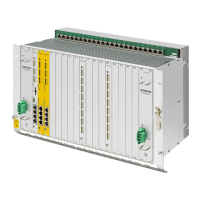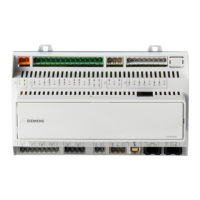Detailed description
2.4 Starting up the PLC program
Basic logic functions: PLC basic program solution line (P3 sl)
20 Function Manual, 11/2006, 6FC5397-0BP10-2BA0
2.4.3 Version codes
Basic Program
The version of the basic program is displayed on the HMI version screen along with the
controller type.
The controller type is encoded as follows:
Leftaligned decade of DB17.DBD0 (byte 0) Controller type
02 SINUMERIK 810D
03 SINUMERIK 840D (561,571, 572, 573)
04 SINUMERIK 840Di
03 SINUMERIK 840D sl (710, 720, 730)
User Program
Users can also display their own PLC version codes on the HMI version screen. For this
purpose, a data of type STRING containing a maximum of 54 characters must be defined in
any data block. The data can contain a text of the user's choice. The parameterization on
this string is done via a pointer on FB1. For this, the data block must be defined symbolically.
See section Block descriptions "FB1 RUN_UP Basic program, Start-up section".
2.4.4 Machine program
The machine manufacturer creates the machine program using the library routines supplied
with the basic program. The machine program contains the logic operations and sequences
on the machine. The interface signals to the NC are also controlled in this program. More
complex communication functions with the NCK (e.g., read/write NC data, tool-management
acknowledgments, etc., are activated and executed via basic-program FCs and FBs).
The machine program can be created in various STEP7 creation languages (e.g. AWL, KOP,
FUP, S7 HIGRAPH, S7GRAPH, SCL). The complete machine program must be generated
and compiled in the correct sequence.
This means that blocks that are called by other blocks must generally be compiled before
these blocks.
If blocks that are called by other blocks are subsequently modified in the interface
(VAR_INPUT, VAR_OUTPUT, VAR_IN_OUT, VAR) as the program is developed, then the
call block and all blocks associated with it must be compiled again. This general procedure
applies analogously to instance data blocks for FBs. If this sequence of operations is not
observed, timestamp conflicts occur when the data are retranslated into STEP7. As such,
the recompilability of the blocks is not ensured and with the function "Status of block"
unnecesary conflicts can also appear. It is, moreover, advisable to generate blocks in ASCII-
STL by means of the STEP7 editor when they have been created in Ladder Diagram or in
single statements (incremental mode).

